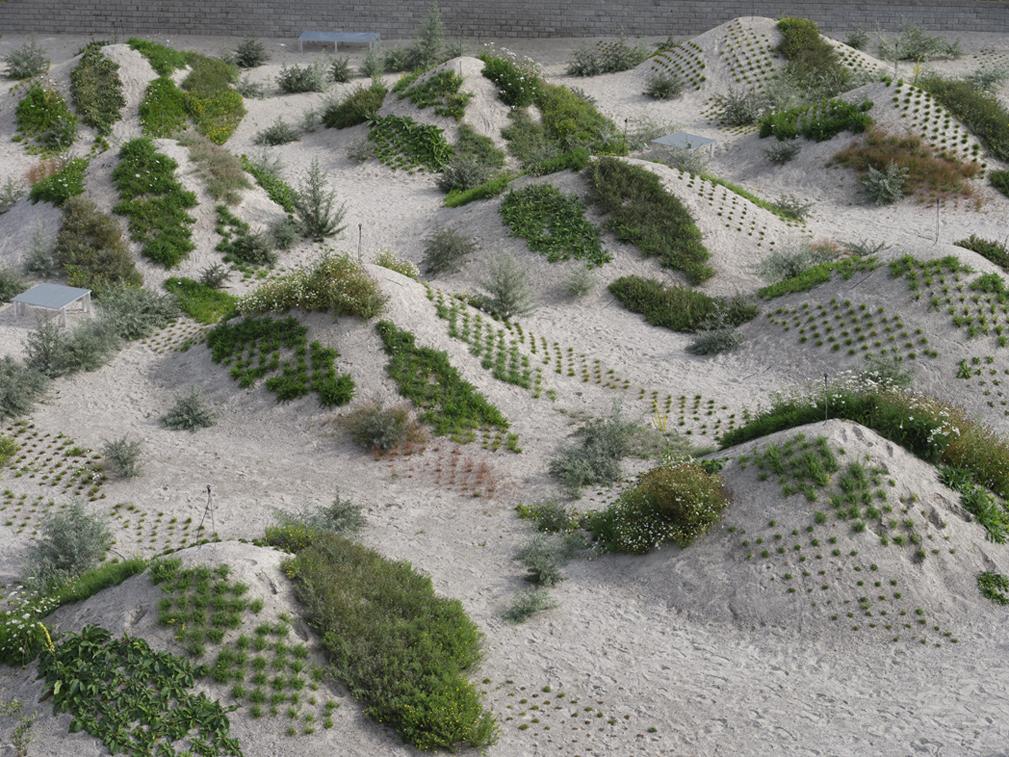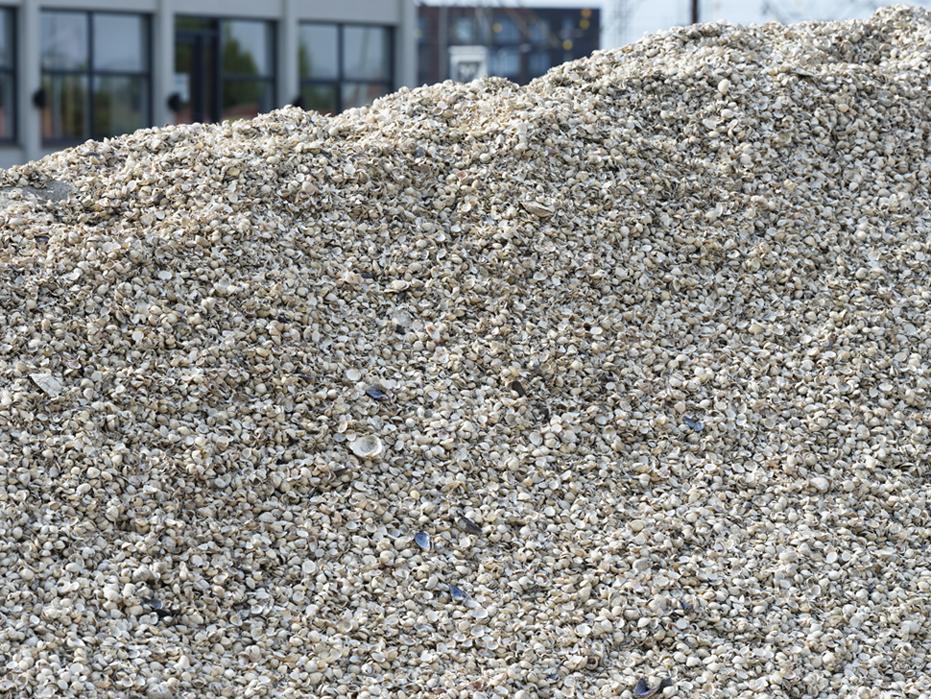Lea Porsager’s site-specific work KLIT (Dune) takes the form of a coastal landscape and acts as a beach biotope (from Greek bios, meaning ‘life’ and topos, meaning ‘place’). Here, coastal plants and insects can live and die in a suitable environment. As an ecosystem, KLIT is constantly in formation and allows the plants in the landscape to grow wild over time.
KLIT, which is situated in an urban environment, surrounded by city streets and traffic, is planted with beach flora. Over the years, it will grow into the type of landscape we know from the Danish coast. Sand and seashells form the foundation of this biotope, while 18 different species of plants, including sea buckthorn, burnet rose, common bird’s foot trefoil, flatweed and wild carrot are taking root.
From beach to laboratory
KLIT also serves as a controlled experiment that takes its point of departure in the world of physics. Several of the small sculptures that are placed in the undulating landscape refer to the famous double-slit experiment from the study of quantum mechanics, an experiment that is still surrounded by an air of mystery.
In KLIT, two seashell waves flow towards a sculptural double slit in an aluminium sheet. On the other side of the sheet, the landscape emerges as a three-dimensional interference pattern in sand, reminiscent of the shapes that emerge when the sea pulls back from the shore. As an intriguing experiment, KLIT is a beach biotope that disrupts the urban space around it and which will vary and change form and character over time, not least due to the impact of weather, climate and the visitors’ entrance into and movements through the artwork.
KLIT speaks to both our senses and our intellect. It was created for the upper secondary and adult education centre HF & VUC Fyn and will be actively used as a teaching aid. In addition, local citizens and visitors are invited to sense, feel, smell and taste this sculptural landscape.
About Lea Porsager
Lea Porsager (b. 1981) is a Danish visual artist trained at the Royal Danish Academy of Fine Arts in Copenhagen and Städelschule in Frankfurt am Main. In 2021, Lea Porsager earned a PhD from Malmø Art Academy. Her works revolve around occult and esoteric topics and engage with ideas and materials from the natural sciences, politics and feminism. At the intersection of the speculative and the fantastical, Porsager engages with a wide variation of media, including film, sculpture, text and photography.
Porsager has held solo exhibitions at Kunsthal Charlottenborg and Overgaden in Copenhagen, Moderna Museet in Stockholm, Künstlerhaus Bethanien in Berlin and the Emily Harvey Foundation in New York and participated in dOCUMENTA (13) in Kassel. In 2018, Porsager created Gravitational Ripples in Stockholm, a memorial to the many Swedes who lost their lives in the tsunami in Southeast Asia in 2004. Porsager is the recipient of the Danish Arts Foundation’s three-year working grant (2014) and the New Carlsberg Foundation’s Artist Grant (2022).







